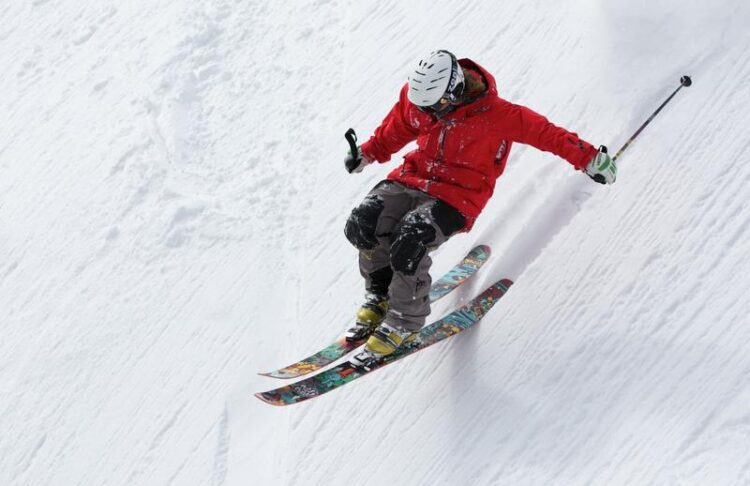Cut-resistant ski undergarment protects against sharp edges

Ski underwear is an important part of the equipment. It can protect against dangerous cuts
Foto: Oleksandr Pyrohov on Pixabay
When we currently see spectacular accidents in alpine competitions, we primarily think of leg and ligament injuries, but there seems also to be an increasing risk of cut injuries from the razor-sharp ski edges. Cut injuries are often severe and can in worst cases even be life threatening. The German Institutes of Textile and Fiber Research Denkendorf (DITF) carry out cutting tests on materials for the textile manufacturers and FIS, the International Ski Federation. Cut-resistant protection undergarment is awarded with a FIS label if the minimum recommended protection level is achieved.
FIS, textile manufacturers and the textile research center together have developed the FIS-DITF recommended minimum standard for the cut resistance of ski protection undergarment. The right undergarment improves the protection of athletes from severe cut injuries. To determine whether the undergarment meets the test specifications, the cut resistance of the material is rated using a 5-star scale.
The scientists at the DITF check the compressive force at which the ski undergarment is cut through with a freshly and relevant grinded ski edge. The fabric has to withstand a minimum 20 centimeter cutting length at an angle of 0, 45 and 90 degrees. The test simulates a cut on an arm or leg with a compressive force of up to 500 N (50 kilograms).
The cutting speed is also precisely defined. For comparable data, the same type of ski is used for each test, the edges of which are always grinded in exactly the same way. “That was a big challenge in development,” emphasizes Thomas Stegmaier, head of the Competence Center for Textile Chemistry, Environment and Energy at the DITF. The star system, on the other hand, is easy to explain: If the undergarment withstands 100 N (10 kilograms) of pressure, it reaches the minimum level of 1 star. For every additional 100 N an additional level and star is reached. Up to 5 stars / levels are possible.
Ski undergarment with the FIS-DITF label not only offers more safety for professional athletes on Olympic slopes, even recreational skiers can benefit from the tested protection garment.
Wissenschaftliche Ansprechpartner:
PD Dr.-Ing. Thomas Stegmaier
Head of Competence Center Textile Chemistry, Environment & Energy
T +49(0)711 9340-219
E thomas.stegmaier@ditf.de
Media Contact
All latest news from the category: Materials Sciences
Materials management deals with the research, development, manufacturing and processing of raw and industrial materials. Key aspects here are biological and medical issues, which play an increasingly important role in this field.
innovations-report offers in-depth articles related to the development and application of materials and the structure and properties of new materials.
Newest articles

Innovative 3D printed scaffolds offer new hope for bone healing
Researchers at the Institute for Bioengineering of Catalonia have developed novel 3D printed PLA-CaP scaffolds that promote blood vessel formation, ensuring better healing and regeneration of bone tissue. Bone is…

The surprising role of gut infection in Alzheimer’s disease
ASU- and Banner Alzheimer’s Institute-led study implicates link between a common virus and the disease, which travels from the gut to the brain and may be a target for antiviral…

Molecular gardening: New enzymes discovered for protein modification pruning
How deubiquitinases USP53 and USP54 cleave long polyubiquitin chains and how the former is linked to liver disease in children. Deubiquitinases (DUBs) are enzymes used by cells to trim protein…



